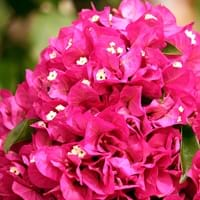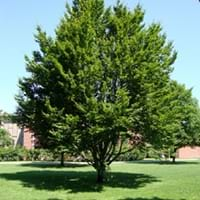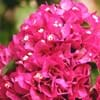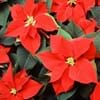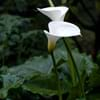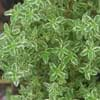Life Span
Perennial
Perennial
Origin
Hybrid origin
North America, United States, Northeastern United States, Mid-Atlantic United States, Southeastern United States, South-Central United States, Texas, Canada
Types
Brasilensis, Easter Parade, Formosa, Rosenka (Orange), James Walker, Jubilee Showlady, Barbara Karst, Elizabeth Angus
Japanese beech, European beech
Habitat
Rainforest, Tropical rainforest
low mountains, shaded woods
USDA Hardiness Zone
9-11
4-9
Sunset Zone
22, 23, 24
1a, 1b, 2a, 2b, 3a, 3b, 4, 5, 6
Habit
Cushion/Mound-forming
Oval or Rounded
Flower Color
Gold, Magenta
Yellow green, Tan
Flower Color Modifier
Not Available
Bicolor
Fruit Color
Brown, Green
Sandy Brown
Leaf Color in Spring
Dark Green
Green
Leaf Color in Summer
Dark Green
Green, Dark Green
Leaf Color in Fall
Dark Green
Gold, Tan, Sandy Brown
Leaf Color in Winter
Dark Green
Not Available
Leaf Shape
Tubular
Lanceolate
Plant Season
Spring, Summer, Fall, Winter
Spring, Summer, Fall, Winter
Sunlight
Full Sun
Full Sun
Type of Soil
Clay, Loam, Sand
Loam, Well drained
The pH of Soil
Acidic, Neutral, Alkaline
Acidic, Neutral
Soil Drainage
Well drained
Average
Bloom Time
Indeterminate
Spring
Tolerances
Salt
Dry soil, Full Sun, Salt and Soil Compaction
Where to Plant?
Ground
Ground
How to Plant?
Grafting, Stem Planting, Transplanting
Seedlings, Stem Planting
Plant Maintenance
Medium
Medium
Watering Requirements
Medium
Needs very little water, occasional watering once established
In Summer
Lots of watering
Lots of watering
In Spring
Moderate
Moderate
In Winter
Average Water
Average Water
Soil pH
Acidic, Neutral, Alkaline
Acidic, Neutral
Soil Type
Clay, Loam, Sand
Clay, Loam, Sand
Soil Drainage Capacity
Well drained
Average
Sun Exposure
Full Sun
Full Sun
Pruning
Cut or pinch the stems, Prune for shortening long shoots, Prune if you want to improve plant shape, Prune in the late winter or spring, Prune prior to new growth, Prune to control growth, Remove dead or diseased plant parts
Cut upper 1/3 section when young to enhancegrowth, Prune to control growth, Remove damaged leaves, Remove dead branches, Remove dead leaves
Fertilizers
All-Purpose Liquid Fertilizer
Compost, Fertilize the soil before planting
Pests and Diseases
Aphids, Leaf spot, Mealybugs, Red spider mite, Root rot, Whiteflies
Aphids, Beech bark disease, fungus, Mildew, Scale
Plant Tolerance
Drought
Drought, Full Sun, Salt and Soil Compaction
Flowers
Yes
Insignificant
Flower Petal Number
Single
Not Available
Foliage Texture
Medium
Medium
Foliage Sheen
Matte
Glossy
Attracts
Hummingbirds
Bees, Birds, Hummingbirds, songbirds
Allergy
Itchiness, Skin rash
Itchiness, Pulmonary oedema, Sinuses
Aesthetic Uses
Showy Purposes, Used for decorating walls, fences, gates, hedges, etc.
Showy Purposes
Beauty Benefits
Not Available
Speed hair growth, Stops hair loss
Environmental Uses
Air purification
Air purification, Shadow Tree, Wild areas
Medicinal Uses
Not Available
Antioxidants, Antiseptic, Digestion problems, Headache, Kidney problems, Pain killer
Part of Plant Used
Whole plant
Leaves, Sap, Wood
Other Uses
Showy Purposes
Decorative veneers, flooring, paneling, Grown for shade, Used as firewood, Used as Ornamental plant, Used for its medicinal properties, Wood is used for making furniture
Used As Indoor Plant
No
No
Used As Outdoor Plant
Yes
Yes
Garden Design
Container, Foundation, Groundcover, Hedges, Mixed Border, Rock Garden, Wall, Tropical
Feature Plant, Shade Trees
Botanical Name
BOUGAINVILLEA 'Helen Johnson'
FAGUS sylvatica
Common Name
Bougainvillea
European Beech
In Hindi
Bougainvillea
यूरोपीय बीच
In German
Bougainvillea
Rotbuche
In French
Bougainvilliers
Hêtre commun
In Spanish
Bougainvillea
Fagus sylvatica
In Greek
Bougainvillea
Ευρωπαϊκή οξιάς
In Portuguese
Bougainvillea
Faia-europeia
In Polish
Bugenwilli
Buk zwyczajny
In Latin
Bougainvillea
Europae fagi
Phylum
Spermatophyta
Magnoliophyta
Class
Dicotyledonae
Magnoliopsida
Order
Caryophyllales
Fagales
Family
Nyctaginaceae
Fagaceae
Genus
Bougainvillea
Fagus
Clade
Angiosperms, Core eudicots, Eudicots
Angiosperms, Eudicots, Rosids
Tribe
Not Available
Not Available
Subfamily
Not Available
Not Available
Season and Care of Bougainvillea and European Beech
Season and care of Bougainvillea and European Beech is important to know. While considering everything about Bougainvillea and European Beech Care, growing season is an essential factor. Bougainvillea season is Spring, Summer, Fall and Winter and European Beech season is Spring, Summer, Fall and Winter. The type of soil for Bougainvillea is Clay, Loam, Sand and for European Beech is Loam, Well drained while the PH of soil for Bougainvillea is Acidic, Neutral, Alkaline and for European Beech is Acidic, Neutral.
Bougainvillea and European Beech Physical Information
Bougainvillea and European Beech physical information is very important for comparison. Bougainvillea height is 76.20 cm and width 910.00 cm whereas European Beech height is 800.00 cm and width 500.00 cm. The color specification of Bougainvillea and European Beech are as follows:
Bougainvillea flower color: Gold and Magenta
Bougainvillea leaf color: Dark Green
European Beech flower color: Yellow green and Tan
- European Beech leaf color: Green
Care of Bougainvillea and European Beech
Care of Bougainvillea and European Beech include pruning, fertilizers, watering etc. Bougainvillea pruning is done Cut or pinch the stems, Prune for shortening long shoots, Prune if you want to improve plant shape, Prune in the late winter or spring, Prune prior to new growth, Prune to control growth and Remove dead or diseased plant parts and European Beech pruning is done Cut upper 1/3 section when young to enhancegrowth, Prune to control growth, Remove damaged leaves, Remove dead branches and Remove dead leaves. In summer Bougainvillea needs Lots of watering and in winter, it needs Average Water. Whereas, in summer European Beech needs Lots of watering and in winter, it needs Average Water.
